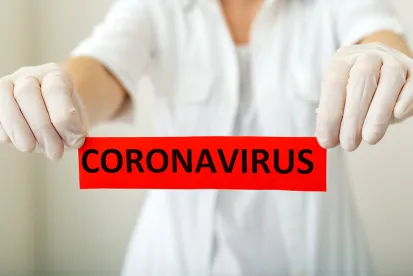Wednesday marked the beginning of a new presidency and with it a new chapter in the U.S. COVID-19 response. The Biden administration immediately unveiled a number of executive orders designed to take control of the pandemic.
Executive Orders & COVID-19 National Strategy
President Biden signed a series of executive orders (EOs) in his first two days in office intended to curb the pandemic — in the same week in which the total death toll exceeded 400,000. The COVID-19 EOs require face masks and social-distancing practices on federal property and while traveling via certain modes of domestic transportation; give the COVID-19 response coordinator the authority to convene and tap relevant domestic and global agencies to coordinate efforts; require all international travelers to the U.S. to have a negative test prior to entry; establish a COVID-19 Health Equity Task Force; enhance data collection and collaboration efforts; and establish a Testing Board and free testing — specifically closing a loophole that previously existed that allowed private plans to charge asymptomatic individuals who wanted to get tested on their own. In addition, Biden invoked the Defense Production Act to secure the supply chain of needed materials: vaccines, personal protective equipment (PPE), etc. On Thursday, Biden released a 200+ page strategy to combat the pandemic.
Vaccine Distribution Hiccups Nationwide
New York City had to cancel over 20,000 vaccine appointments this week as their supply ran dry, a step many other states had to take for similar reasons. The city is considering using its 65,000 stock of the second dose of the vaccine to close the supply gap. Some states are pulling back on their vaccine allocation criteria to narrow the number of eligible individuals to match their scarce supply. Last week’s White House announcement encouraging states to expand vaccination to individuals over 65 led many states to believe they would receive shipments from the feds to meet the new guidance; however, it was determined that the federal government’s stockpile was dried up as well. California is considering prioritizing those 65-plus over those with high-risk occupations for easier logistical distribution. In the meantime, Pfizer this week indicated interest in working with the Department of Health and Human Services (HHS) on a distribution model that would allow state governments to buy directly from them.
Sequencing COVID-19 Samples
The Centers for Disease Control and Prevention (CDC) on Monday secured a contract with Quest Diagnostics to do genomic sequencing of the COVID-19 virus. This news comes two weeks after LabCorp signed the same in an effort to expand the CDC’s genomic sequencing capabilities. The data from private laboratories will be combined with data coming from public health and academic laboratories nationwide to assist in identifying mutations, prevalence and patterns of transmission.
Concerns of New COVID-19 Variants
Several new variants of COVID-19 have been discovered recently in the U.K., Brazil, South Africa and possibly California. Preliminary reports indicate that while these variants are more easily transmitted, they do not seem to result in increased mortality. These new variants are raising concerns on the effectiveness of the three main COVID-19 vaccines from Pfizer BioNTech, Moderna and AstraZeneca currently being administered all target the spike protein (S-protein) where these variants have mutations. For the U.K. variant, it is predicted that these vaccines will still be effective, and preliminary data on the effectiveness of the Pfizer BioNTech vaccine supports that theory. For the South African variant, there is more concern that one mutation in the S-protein called E484K may reduce the effectiveness of the vaccines. Preliminary data on the South African variant has demonstrated that this variant is less affected by the immune responses from previous infections. The Brazil variant has been reported to have this same E484K mutation as the South African variant. More experiments are underway to further assess the effectiveness of the vaccines against these variants. It should be noted that if any of these and other variants are found to be less susceptible to these vaccines, given the high effectiveness of these vaccines they will likely still have levels of effectiveness above the World Health Organization threshold of 50%.
Vaccine Side Effects Continue To Be Studied
Vaccines being administered in the U.S. under emergency use authorization have been carefully studied in tens of thousands of people, and further studies are ongoing — in part, to better understand all possible effects of vaccines in diverse populations. For example, the age of participants ranged from 16 to 89 years old in the BNT162b2 vaccine study group and from 18 to 95 years old in the mRNA-1273 study, indicating the vaccines are safe and effective in both old and young adults. On the other hand, information about the impact of serious underlying health conditions and multiple medications is still limited. The vaccines have now been administered to millions of people, leading to a slow accumulation of observations of health problems and even deaths which occurred shortly after the vaccine administration and which may or may not have been caused by the vaccine — see here, here and here. Severe allergic reactions seem to be one of the acknowledged potential side effects, and a number of other possible reactions have now been documented, including itch, rash, swelling and mild respiratory symptoms. A continued collection and analysis of real-world data is critical to establishing the safest and most effective protocols to vaccinate entire populations.






 />i
/>i

